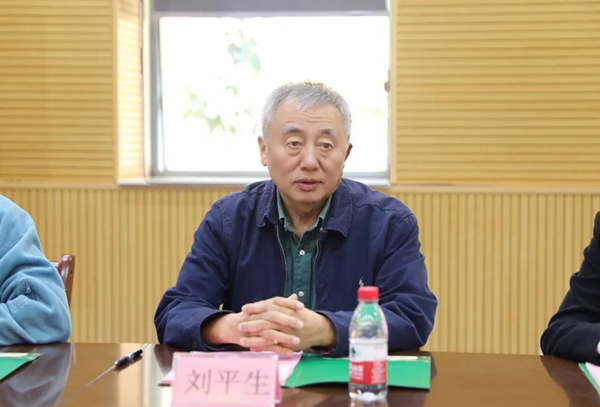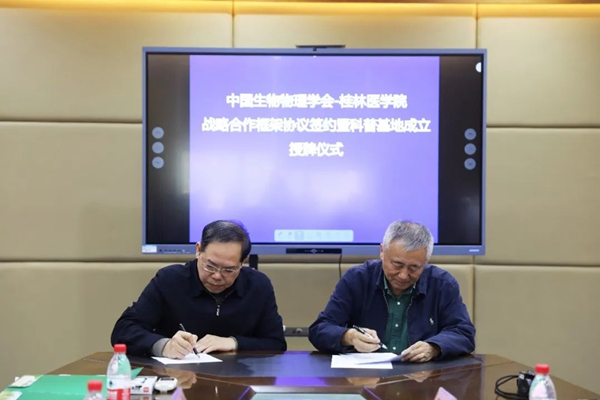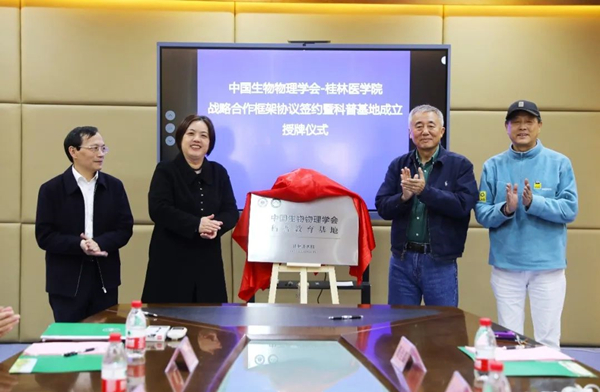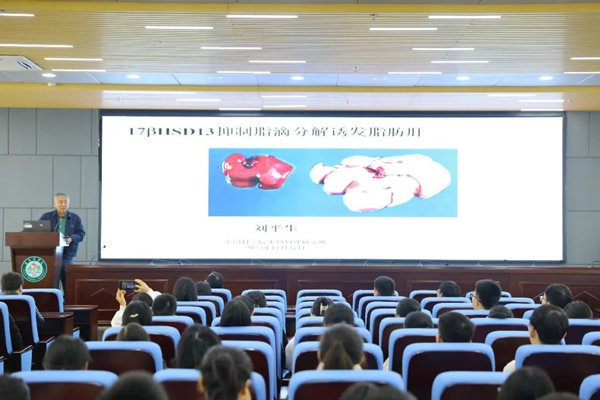Home> News
BSC, GLMU establish strategic cooperation and science education base
Updated: 2023-12-06
The Biophysical Society of China (BSC) and Guilin Medical University (GLMU) signed a strategic cooperation framework agreement and announced the establishment of the BSC Science Education Base in Guilin, Guangxi Zhuang autonomous region, on Nov 17.
The event was attended by Liu Pingsheng, secretary-general of the BSC and a researcher at the Institute of Biophysics of the Chinese Academy of Sciences, representatives from Guilin Medical University and the BSC, as well as experts and scholars.

Liu Pingsheng, secretary-general of the BSC, addresses the ceremony on Nov 17. [Photo/WeChat account: BSC]
In his address, Liu expressed that the BSC, as a first-level academic society of China, holds extensive influence in the field of biophysics. Since its establishment over 40 years ago, the society has continually grown, and in the future, it aims to lead 32,000 scientific and technological workers to assist local institutions in talent recommendation.
By fostering more medical professionals with a passion for science and innovation, it aims to promote disciplinary development and research innovation, he added.

Liu Pingsheng (R) and Jiang Wei, head of the Science and Technology Department at GLMU, sign the strategic cooperation framework agreement. [Photo/WeChat account: BSC]

Officials from the BSC and GLMU unveil the plaque for the BSC Science Education Base. [Photo/WeChat account: BSC]
During the ceremony, Liu and Jiang Wei, head of the Science and Technology Department at GLMU, signed the strategic cooperation framework agreement. Liu also announced the establishment of the BSC Science Education Base. Officials from both sides unveiled the plaque for the base.

Liu Pingsheng delivers an engaging lecture to the faculty and students of GLMU. [Photo/WeChat account: BSC]
Subsequent to the signing ceremony, Liu delivered an engaging science education lecture to the faculty and students of GLMU. Integrating the university's key research topics with the popular subject of metabolism and obesity, he provided a detailed explanation of the mechanism involving lipid droplet protein 17βHSD13-induced fatty liver.
He also emphasized experimental techniques and key challenges in lipid droplet purification and encouraged young researchers to maintain enthusiasm for scientific research and continuous innovation.
